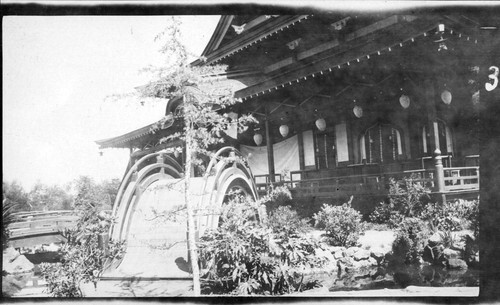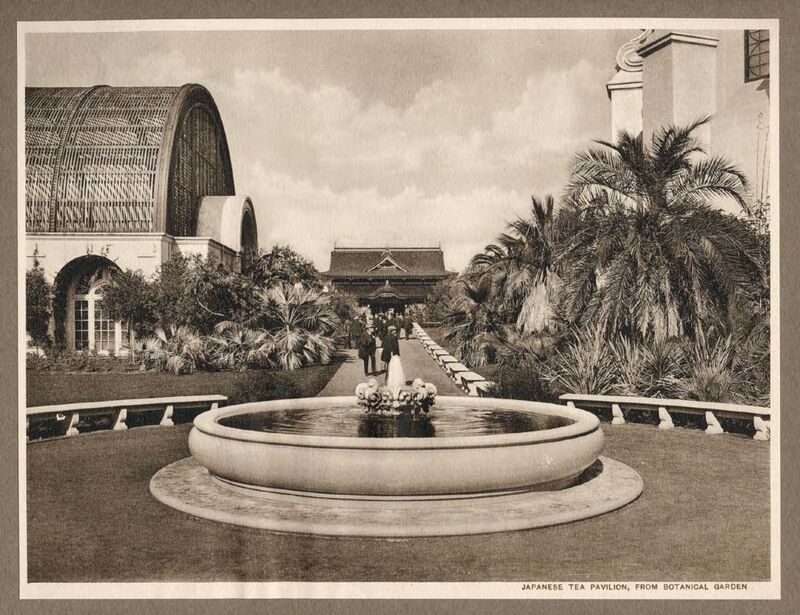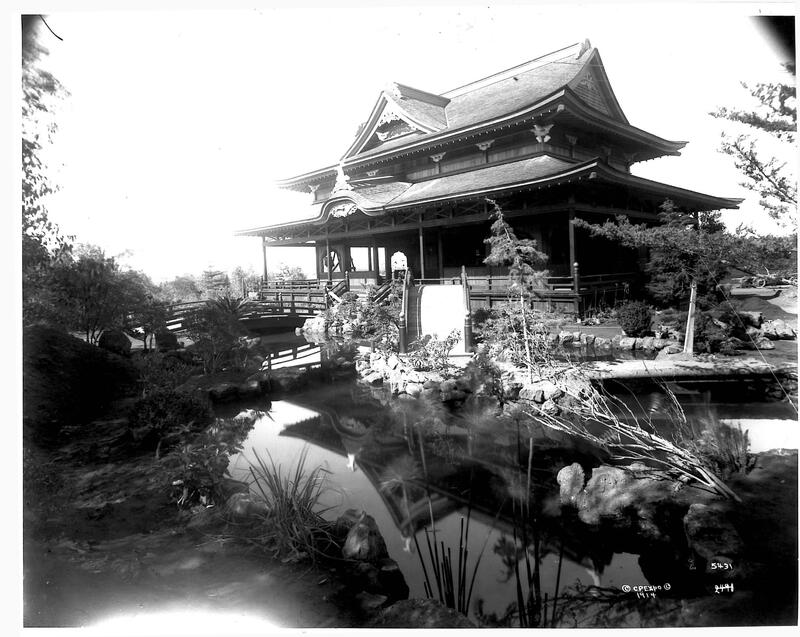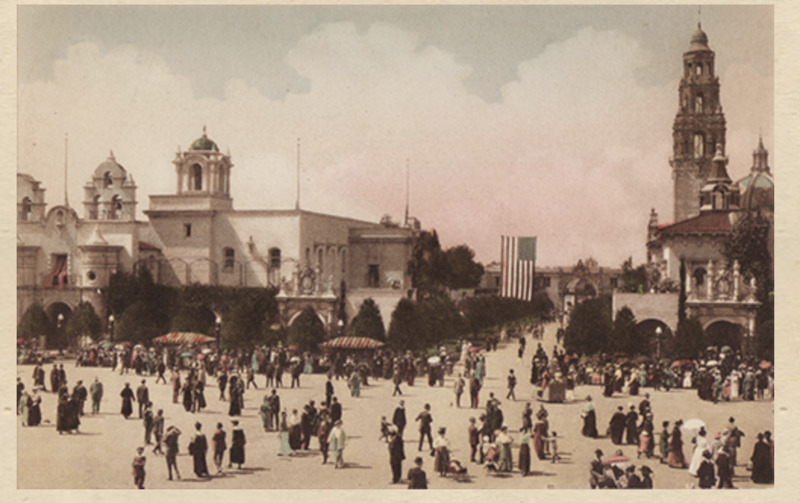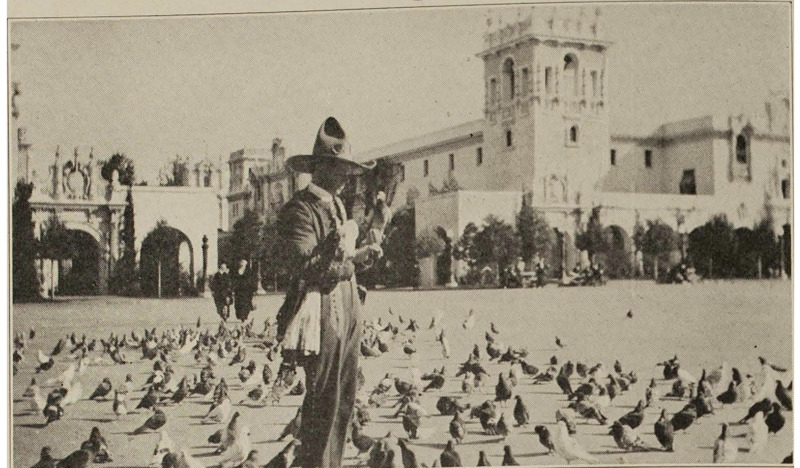1915 Panama-California Exposition
In 1910, planning was underway for the first World’s Fair to be held on its grounds and, after months of discussion, Park Commissioners decided on renaming City Park as Balboa Park. In 1913, the San Diego Nihonjin-kai (Japanese Association) co-ordinated the participation of the Japanese community in Balboa Park for the 1915 Panama-California Exposition [1]. This marked the first Japanese tea house within San Diego park boundaries [2]
For the 1915 Panama-California Exposition, the Japanese Tea Association built the tea garden and pavilion in the corner northwest of the Botanical Building. Japanese gardeners constructed the garden with plants native to both Japan and San Diego, like bamboo, wisteria, and cedar trees. Architect, K. Tamai used temples in Kyoto as inspiration for the tea pavilion, although temples had nothing in common with the real, much simpler design of this tea house. The original structure was a beautiful Honmune-style building and despite its impressive rooftop, it was actually only one story. The Japanese tea pavilion was the first building planned for the Exposition that represented a foreign nation. [3]
A firm out of San Francisco, Watanabe and Shibada, built the garden around the Tea Pavilion grounds as well as construction of a 'moon bridge' over a small flowing stream. However, the exaggerated shape of the bridge within the garden was inaccurate in relation to traditional Japanese bridges, and the notion promoted that walking over the bridge offered 'good luck' was also a fabrication created for tourists [4].
Although the bridge may not have been entirely accurate, the Japanese gardeners were knowledgeable in the execution of the contents within the garden, like techniques for bonsai trees and ikibana. While typically a Japanese garden has some sort of boundary that separates it from the rest of the compound, this was not possible in the minute space that the garden occupied so there was unfortunately no border surrounding it in order to separate the area from the rest of the park [5].
*Check out more on the 1915 Panama-California Exposition and Balboa Park and the 1915 Pan-CA Expo's Official Guidebook.
Sources:
[1] Estes, Donald H. “Before the War: The Japanese in San Diego.” Journal of San Diego History
San Diego Histroical Socety Quarterly, Fall 1978, Volume 24, Number 4. Editor Thomas L. Scharf. San Diego History Center - Our City, Our Story, September 30, 2016. https://sandiegohistory.org/journal/1978/october/before/.
[2] “Japanese Friendship Garden of San Diego.” U.S. Japanese Gardens, May 21, 2016. https://us-japanesegardens.com/tag/japanese-friendship-garden-of-san-diego/.
Amero, Richard. "A Panama-California Exposition: A History of the Exposition," Panama-California Exposition San Diego History Center. https://sandiegohistorycenter.org/archives/amero/1915expo/.
[3] - "Chapter 1: The Making of the Exposition, 1909-1915"
[4,5] - "Chapter 4: "East Meets West in Balboa Park"



